The Big Question is a semi-regular outing where multiple Daily Grindhouse contributors and friends offer their answers to some burning question. The results…may surprise you.
This week’s big question is…
What Was The Best Non-2019 Film
You Watched (for the first time) In 2019?
Whether it’s on a TV network, through a streaming service, on blu-ray or DVD, at a film festival, or a repertory screening…chances are you discovered a film made before 2019 that you watched for the first time last year. So, with all of those possibilities…what was your favorite?
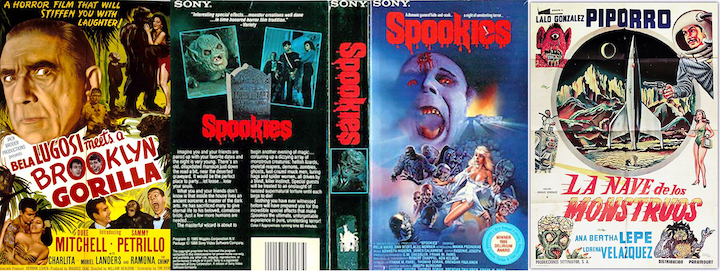
Thanks to Scream Factory, Vinegar Syndrome, Arrow Films, Severin, Criterion, MVD, and more — blu rays are constantly coming out of either beloved classics or lost gems. Similarly Shudder, Disney+, MUBI, Criterion Channel, and Amazon Prime and a few other streaming services are resurrecting otherwise forgotten fare or stuff that simply missed you by the first time.
So, what was your personal throwback discovery in 2019 of a film that came out years before? Could be a golden oldie, could be some obscure title, or anything in between. Let us know!

Brett Gallman — BLOOD DEBTS (1985)
My classy, respectable answer to this would actually be BLACK NARCISSUS, a film that haunted me for weeks after watching it. Powell and Pressburger’s masterpiece is an immaculately crafted, profound monument to regret and repressed urges. Startling in its simmering eroticism and its stark portrayal of various crises of faith, it’s one of the most evocative, melancholic films ever made.
But, you know, BLACK NARCISSUS doesn’t have a damn bazooka. You know what does have a bazooka? BLOOD DEBTS has a bazooka. BLOOD DEBTS also has an exploding golf ball. BLOOD DEBTS has arguably the most lethal concealed weapon in the history of movies. BLOOD DEBTS has just about everything, save for any fathomable explanation for its unlikely existence. Granted, its story is a familiar one since it was one of the scores of low-budget action movies filmed in the Philippines looking to satisfy (read: exploit) moviegoers’ burgeoning bloodlust at the movie theaters during the ’80s. This one in particular is an answer to DEATH WISH, only it comes across as a more brain-damaged DEATH WISH 3. Maybe this explains the motivation behind BLOOD DEBTS, but believe me when I say that I still cannot explain how such a beautiful collision of mustaches, track suits, convoluted villain plots, vigilante justice, and bad taste could possibly exist with such purity.
Please note: you may encounter someone in your life who insists you need to see the notorious ending of BLOOD DEBTS on YouTube. While this person is to be commended for spreading the gospel, trust me when I tell you to resist the urge. You’re gonna just want to let those final, glorious 40 seconds sneak up on you within the proper context. Sure, seeing them without context was one of my most memorable moments in 2019, but it was a distant second to seeing the other 93 minutes of BLOOD DEBTS.
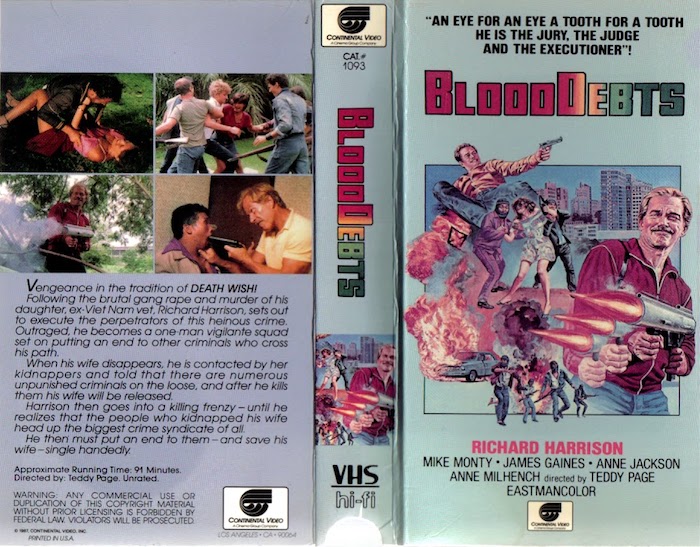
Rob Dean — LINK (1986)
I have a great affinity for monkey movies—whether it’s SHAKMA, PROJECT X (1987), TROG, MONKEY SHINES, or the PLANET OF THE APES series. Yet I somehow had never heard of this film before last year and my god is my life better for discovering it. LINK was directed by ozploitation filmmaker Richard Franklin (ROAD GAMES, PATRICK) who also helmed some better than they should be ‘80s films (PSYCHO II and CLOAK & DAGGER). It is a completely bonkers film with committed performances by Elisabeth Shue, Terence Stamp, and one pissed off yet kind of erudite orangutan. What makes LINK work so well is that it is tonally all over the place, with moments of comedy, horror, action, and even awkward sexuality all abutting against each other in fascinating, bizarre, and unpredictable ways. It’s truly worth checking out if you haven’t seen it—because I guarantee you haven’t seen anything like it.
Samantha Schorsch — UDTA PUNJAB (2016)
I honestly end up not watching Bollywood for any reason beyond my weird dislike of random musical numbers that has only been quelled by Mel Brooks and HOCUS POCUS—but long haul flights are long haul, and on one of my adventures I decided to try out UDTA PUNJAB after reading the plot summary of a social drama about the Punjab region’s massive narcotics problem. I ended up loving it. One of the four principal characters being an insanely popular pop star ensured my musical number fatigue wouldn’t set in because him playing concerts and recording music made sense, and all of the varied protagonists had such rich, and varied backstories and motivations. Watching them all collide was heartbreaking and so, very well done. It changed my mind about what films like that could be, and I’m honestly hoping I can deep dive further this coming year into the cinema from one of the most prolific film countries on the planet.
Note: UDTA PUNJAB was heavily censored if not outright banned, and extremely controversial in India during its initial release, so it is extremely outside of the usual Bollywood fare to which the US is normally exposed and I don’t know if I ever would have seen it if I hadn’t been on that plane.
Bill Bria — WHEN A STRANGER CALLS (1979)
Taking a close look at the way individual films typically categorized within subgenres either support or defy that categorization is a hobby of mine, and this year I finally caught up with Fred Walton’s 1979 WHEN A STRANGER CALLS. Prior to this, I’d only known the film by reputation, specifically its iconic opening 20 minutes adapted from Walton’s initial short film, The Sitter, and more broadly from the pervasive urban legend of “The Babysitter and the Man Upstairs.” STRANGER’s version of “the calls are coming from inside the house!” is so powerfully done that it is typically cited as the primary/best example of it, despite Bob Clark’s BLACK CHRISTMAS making great use of the same suspenseful twist just five years prior. Walton’s craft is super impressive in this film, and can be called Hitchcockian in the best way.
Yet what really surprised me and made the movie my pick for my favorite first-time watch of last year, is that the rest of the movie past that opening sequence is a remarkably nuanced character study, chronicling the fallout of the upstairs caller’s crime. That criminal, Curt Duncan (Tony Buckley), the private eye chasing him, John (Charles Durning), and the babysitter who survived, Jill (Carol Kane), are all viewed through the lens of the trauma that haunts them. STRANGER went into production just as John Carpenter’s HALLOWEEN was being released in theaters, so while it’s often lumped in with the glut of slasher films that followed, it’s in fact a much more unique and rich movie (there are no “kill scenes” to be found!) than that would imply. The urban legend that spawned it has lasted for decades, and I hope the film itself will continue to scare and surprise people who discover it for years to come.
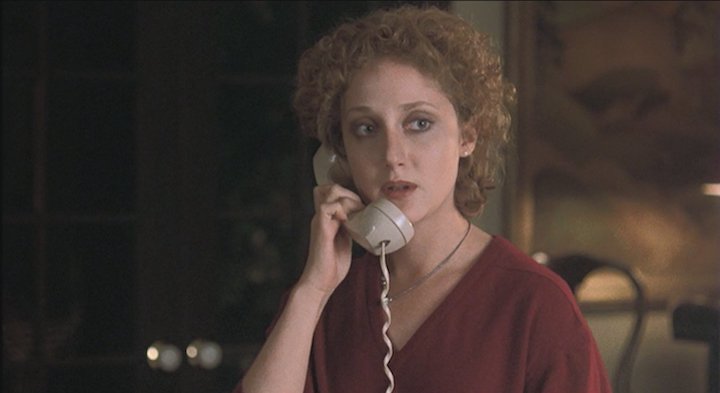
Jay Alary — THE GUEST (2014)
Last year, on one occasion, I went to my favourite used bookstore and perused the shelves of books and Blu-rays, finding a copy of Adam Wingard’s THE GUEST. I hadn’t seen it, but I had seen Wingard’s YOU’RE NEXT and his segment in V/H/S 2, so I bought it for less than $5 without hesitation. It sat in a pile for months before a couple of groovy Texas friends spoke very highly of the film (I suspect some of it was based on the too-handsome-for-his-own-good Dan Stevens). I plucked the Blu-ray from the pile and was instantly immersed in an expertly-crafted thriller that takes its time to build tension until the dizzying payoff. When Stevens’ military vet David shows up at the Peterson house, he claims to be a friend of their deceased son who was killed on duty in Afghanistan. Slowly, David ingratiates himself into the family, not just helping with house chores, but getting involved with the children’s lives as well, welcomed or not. Wingard does an excellent job of showing David’s family immersion scene by scene, while Stevens switches from thoughtful and kind to malevolent with the flick of an expression and change in body language.
Once the tension becomes almost unbearable, the narrative speeds up like an adrenaline-fueled kick to the gut and the fantastic electronic score and bright neon lighting become equally frenetic. How Stevens is not a superstar is beyond my comprehension, but he gives the material everything he’s got, as do the rest of the cast (it’s always good to see Sheila Kelley and Leland Orser in any film)—it’s easy to see why Maika Monroe was cast as the lead for IT FOLLOWS based on her performance here. With its mix of thriller, horror, and science fiction elements, THE GUEST is the film that laid the blueprint for MANDY and other neon-soaked genre films. It’s my favorite film discovery of 2019—thanks so much for the recommendation, Andrew and Elbee!
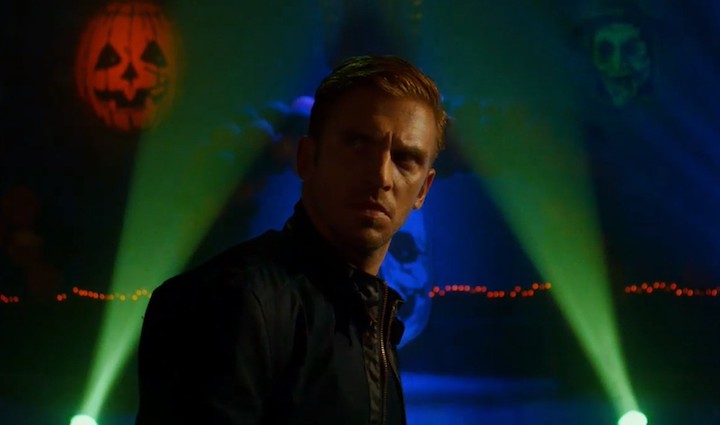
Stephanie Crawford — PREDESTINATION (2014)
PREDESTINATION was a complete surprise to me, and even me deciding to watch it was on a whim: I saw a decent score on Vudu and recognized Michael and Peter Spierig’s name from the goofball zombie film UNDEAD that I went on a rollercoaster of loving, then hating, then loving throughout its runtime. DAYBREAK was fine, and I was game to see them with Ethan Hawke again as, honestly, I’m always game to see Hawke in anything. I’m happy I did, as PREDESTINATION takes a lot of time travel tropes, respects them without idolizing them, then scoops them up and uses them in as many ways possible as fuel to run headlong through the human psyche.
Based on the story “—All You Zombies—” by Robert A. Heinlein, PREDESTINATION didn’t pull any of the punches when it came to the text’s focus on gender identity, sexual politics, and the mental and emotional devastation that can crash and rend through everything when people try to suppress those vital, human threads just so they can do their jobs. Hawke is great, and the role feels like he’s sacrificing himself wholesale to get dissected by the script, and bless him for it. The real star, however, is Sarah Snook, who juggles so much in this film—all of it heavy, all of it varied—that her character Jane/John becomes one of the great unsung, complex, introspective heroes in modern sci-fi along with my favorite, Babel-17‘s Rydra Wong. PREDESTINATION is one of those films that takes on giant ideas and even takes the time to have a solid dash of beautifully executed action scenes, but it still manages to come off as one of the most subtle and introspective barn burners I’ve ever seen.
J. Tonzelli — THE INCIDENT (1967)
There is a very real psychological phenomenon known as “the bystander effect,” which deduces that the more people who are present during an event that would normally require intervention to diffuse a violent or traumatic conflict, the less likely anyone will do so. Basically, if two people witness something where intervention would be necessary, those two are more likely to intervene than if ten or fifteen people were at the same scene. THE INCIDENT, which plays out as a bleak and uncomfortable combination of 12 ANGRY MEN and THE TAKING OF PELHAM 123, is a cinematic embodiment of this phenomenon and a fascinating character study about fear, anger, racism, and loneliness. Like a Weegee photograph come to life, the black and white cinematography not only captures the seediness and despair of a late ‘60s-era New York, it also provides every single character with an implied backstory about his or her experiences, foreshadowing how they will react once they become trapped on the subway train for the most agonizing ride of their lives.
Director Larry Peerce and writer Nicholas Baehr made a very New York film that is not complimentary of New York. Every single character is in a bad way; no one is happy. People aren’t just being victimized by two hoods on a train (with two audacious and excruciating performances by Martin Sheen and Tony Musante); they’re being victimized within their relationships, or by society at large, or by their own lives or desires. As the tension on the train car increases, the audience wants it to stop — would, also, like some of its characters, beg for it to stop. And an idea begins to creep in that there are a handful of young and able-bodied men on that train who could easily, if working together, disarm the two punks. But no one ever has that idea. Sure, as one after another they are victimized and terrorized, they trade awkward glances to other riders with pleading eyes, hoping for someone to intervene. But no one does. Everyone cowers, even behind those making empty threats to call the police — somehow, on a subway train, traveling 60 miles an hour.
Those with strong stomachs and an affinity for challenging cinema need to ride this train. Those who don’t need the reminder that in this world it’s every man for himself need to get off at the next stop.
John Rieber — EMANUELLE AND FRANCOISE (1975)
No, not THAT “Emanuelle” – although legendary Eurosleaze director Joe D’Amato would make an EMANUELLE film the following year with Laura Gemser. EMANUELLE AND FRANCOISE is the 1975 shocker that Severin Films recently released in a terrific remastered blu-ray. As a lover of cult film, I’ve enjoyed discovering many classic films that are being re-released now, and this one was a terrific find.
Rosemarie Lindt, of SALON KITTY notoriety, stars as Emanuelle—a woman out for revenge against the man who betrayed her sister. Oh, and what a bit of revenge it is: this film pulls out all the stops of depravity: torture, cannibalism, orgies, and meat cleavers, plus a really cool mirror that factors into the film’s shock ending. The look and feel of the movie is pure ’70s “Eurosleaze”—Eastern European exteriors that have a layer of grit, and interiors that look like a rundown hotel in Prague. And that’s a compliment! The atmosphere adds to the sense of dread that star George Eastman feels as his fling with Emanuelle quickly turns into something more sinister – and he discovers her plot against him.
What impressed me most about the film is director D’Amato’s willingness to try anything: some of the scenes are outrageous, yet he plays them straight—and at times the viewer isn’t sure what’s real and what’s an illusion. That factors into the plot, as Eastman’s hold on reality becomes more and more tenuous as Emanuelle tightens the screws…literally! I have a healthy collection of ’70s grindhouse fare, but very little of D’Amato’s work. Eastman and D’Amato worked on other films as well. Based on what was on display here, I will be diving into the deep end of his cinematic pool again!
https://www.youtube.com/watch?v=bKlt2GidpUk
Jeremy Lowe — BLOOD HARVEST (1987)
In all seriousness: God bless Vinegar Syndrome. That company churns out some of the most obscure films that I’ve never heard of, and I love them so much for it. BLOOD HARVEST was a blind buy I made during one of Vinegar Syndrome’s many sales, and I’m so happy I did. It’s a magical film. Jill (Itonia Salchek) returns home from college only to find her parent’s home broken into and vandalized. Soon she finds herself stalked, and her friends vanishing one by one. Not a whole lot happens in BLOOD HARVEST, but it’s so campy and weird it’s a must-see for fans of strange cinema. Forget Pennywise from IT (2017), Mervo is the clown you want to keep an eye on. If you are ever going to watch one horror movie featuring a psychotic clown played by cult icon Tiny Tim, then let that one movie be BLOOD HARVEST. HIGHLY RECOMMENDED! (also available on Shudder)

Jon Abrams — FATAL TERMINATION (1990)
I’d been hearing occasional rumblings about this movie over the past couple years, and thanks to an Exhumed Films screening, I finally got a look at it for myself. If you hear anything about this movie, it won’t be about the movie as a whole. It’s an energetic action film with a plot that maybe doesn’t entirely track. You’ve seen this before in Hong Kong Cinema. You might also recognize some of the cast members, like Moon Lee or Phillip Ko. I recognized Robin Shou from BEVERLY HILLS NINJA (I know, I’m an embarrassment), best known to American audiences as Liu Kang from the MORTAL KOMBAT movies. None of that matters. If you hear about this movie, it’s going to be about a certain scene that happens a little more than fifty minutes in. You’ll know it when you see it. I am intentionally not including a YouTube clip of the scene I’m talking about. If you’ve seen the movie, you know it already. If you haven’t, you don’t want the first time you see this scene to have been on YouTube. It’s okay if you know it’s coming eventually, but what you want to do is watch the movie from the beginning and see it in context. There IS no context for a scene like that, but I’d like you to have the experience of being lulled into thinking this movie is your run-of-the-mill Hong Kong action extravaganza, and not the bearer of one of the most insane fucking stunt sequences ever put on film. Because for fifty minutes, you might forget that one of the most insane fucking stunt sequences ever put on film is coming. And then it does. And after that, you’ll never forget it.
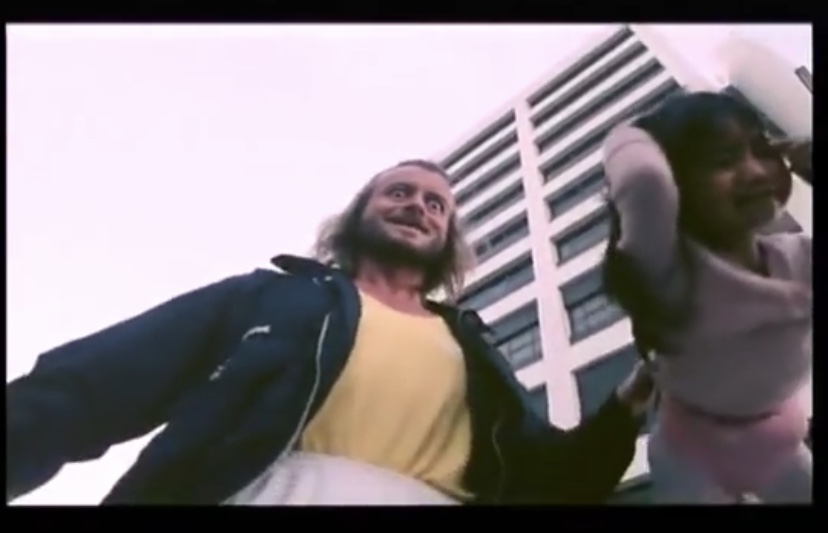
What about you, gentle reader?
What was your favorite non-2019 film discovery of 2019?
Let us know in the comments below!

Tags: Adam Wingard, Black Narcissus, Bollywood, Carol Kane, Charles Durning, Dan Stevens, Elisabeth Shue, Ethan Hawke, Joe d’Amato, Larry Peerce, Maika Monroe, martin sheen, Punjab, Richard Franklin, Richard Harrison, Robert A. Heinlein, Rosemarie Lindt, Severin Films, Simon Barrett, Spierig Brothers, Terence Stamp, Tiny Tim, Tony Musante, Vinegar Syndrome


Loved this question – thanks for including me!